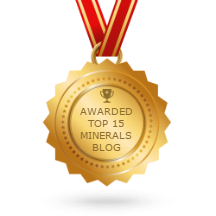Copper is arguably the world's most critical metal (posting of 27 May 2024; Is copper THE most critical metal? It always has been). Copper remains a cornerstone of global industrial development, critical for electrical wiring, electronics, infrastructure, and the green revolution's renewable energy systems and yet, despite its essential role, it has only recently been added to the USA's list of critical metals and minerals.
Global mined copper production currently stands at around 23 million tonnes per year, but every credible forecast warns that far more will be needed. The transition to renewable energy and the rapid adoption of electric vehicles are already stretching supply. Now, the accelerating "fifth industrial revolution", artificial intelligence, is adding an entirely new layer of demand.
Artificial Intelligence (AI) has been with us for a number of years now, but its use is increasing exponentially. When we converse with ChatGPT or Amazon's Alexa it is easy to imagine that we are conversing with a human and there have been recent reports of people forming deep emotional bonds with AI companions. But in reality we are conversing with something like this:
 |
| AI Data Centre (Photo AdobeStock) |
Analysts have predicted that copper demand from the sector will average around 400,000 tonnes annually over the next decade, peaking at 572,000 tonnes in 2028. The cumulative total in use by data centres could top 4.3 million tonnes by 2035. That comes on top of surging demand from other sectors, such as power transmission and wind energy, where copper usage is expected to almost double by 2035.
Existing copper mines are aging, facing declining ore grades and requiring costly reinvestment to maintain output. Over one-third to half of global supply may face these constraints over the next decade. Even with optimistic assumptions, there's a clear supply gap by 2035. Recycling, while helpful, won't fully bridge the gap. Increasing copper recycling is only part of the solution: recycled copper supply is projected to rise from about 33% today to 40% by 2035, and possibly 50% by 2050. But this still leaves a significant need for new mining.
In 2025 and beyond, copper ore processing innovation is indispensable, both to supply increasing demand and to ensure that production remains environmentally responsible. Around 80% of copper ore mined today is sulfide ore, almost all of these ores being processed by flotation to make concentrates. The other 20% of copper ore is oxide ore, processed mainly by leaching/SX-EW.
Flotation is absolutely central to copper production, so even modest improvements here can have a huge impact on supply. Global average flotation recovery for copper sulfides is 80-90%. A 1% increase in recovery across the industry could add hundreds of thousands of tonnes of copper annually, equivalent to a new mid-sized mine.
MEI’s Flotation ’25 is now just two months away, arriving at a pivotal time not only for copper but for the full spectrum of critical metals and minerals driving our resource-hungry world.
This year’s conference will spotlight the latest advances in reagent chemistry, bubble-particle interactions, hydrodynamics, circuit optimisation, and environmental performance, topics that are tightly aligned with today’s industry priorities. With more than 200 presentations from leading academics, industry pioneers, and cutting-edge technologists, Flotation ’25 is set to be a landmark gathering for the mineral processing community.
Delegates can expect bold new perspectives on sustainable flotation: bio-based reagents, greener chemistries, nanoparticle innovations, real-time monitoring tools, and machine-learning-driven control systems. Together, these advances are redefining what it means to maximise recovery while minimising environmental impact.
#Flotation '25


















No comments:
Post a Comment
If you have difficulty posting a comment, please email the comment to bwills@min-eng.com and I will submit on your behalf